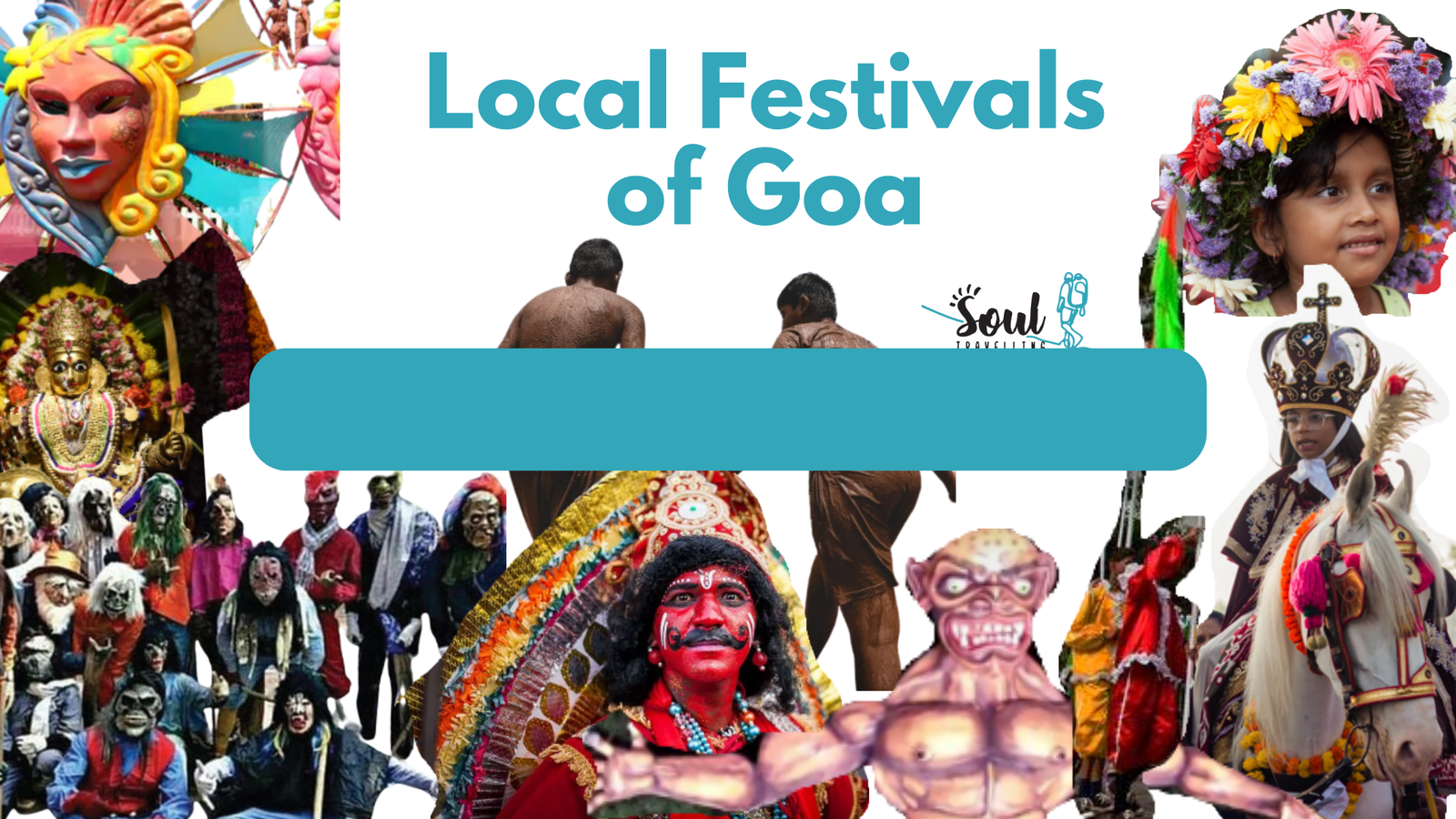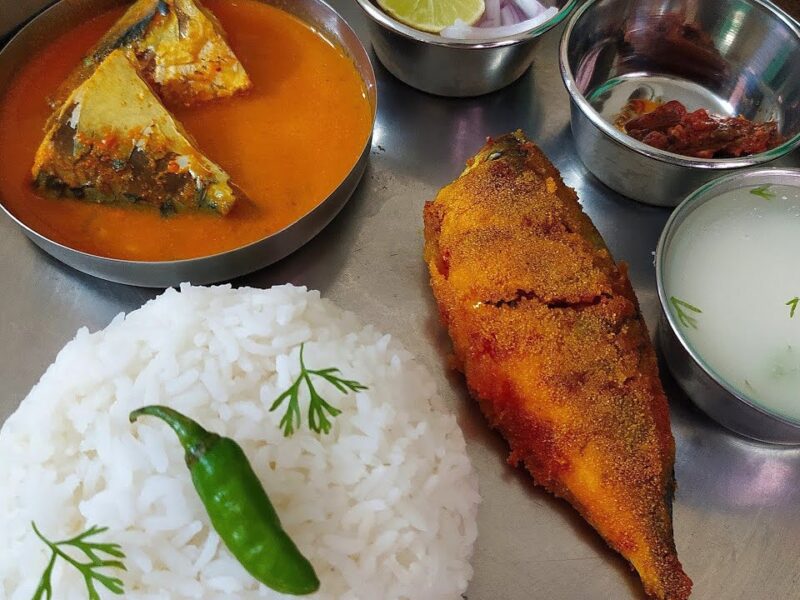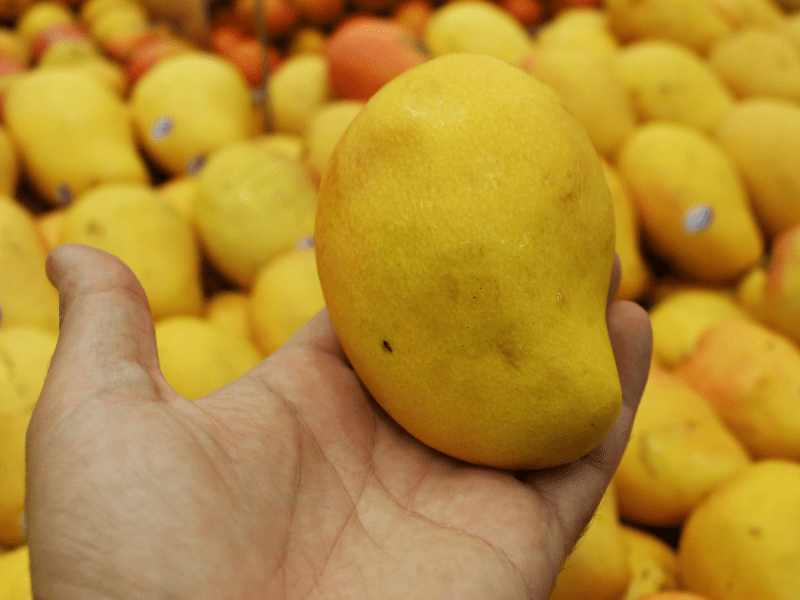Goan festivals are vivacious, vibrant and vocal of the turmoil it has been through. It’s time they get just as much attention as your international music festivals in Goa do! They are the one element that bring out the history and culture of this land.
No, we’re not talking about Diwali, Christmas or even the much cherished Ganesh Chathurthi. We’re talking about the lesser-known festivals of Goa that are not only exciting but also carry with them their own mysterious backstories.
Chikhal Kalo (June/ July, Ponda)
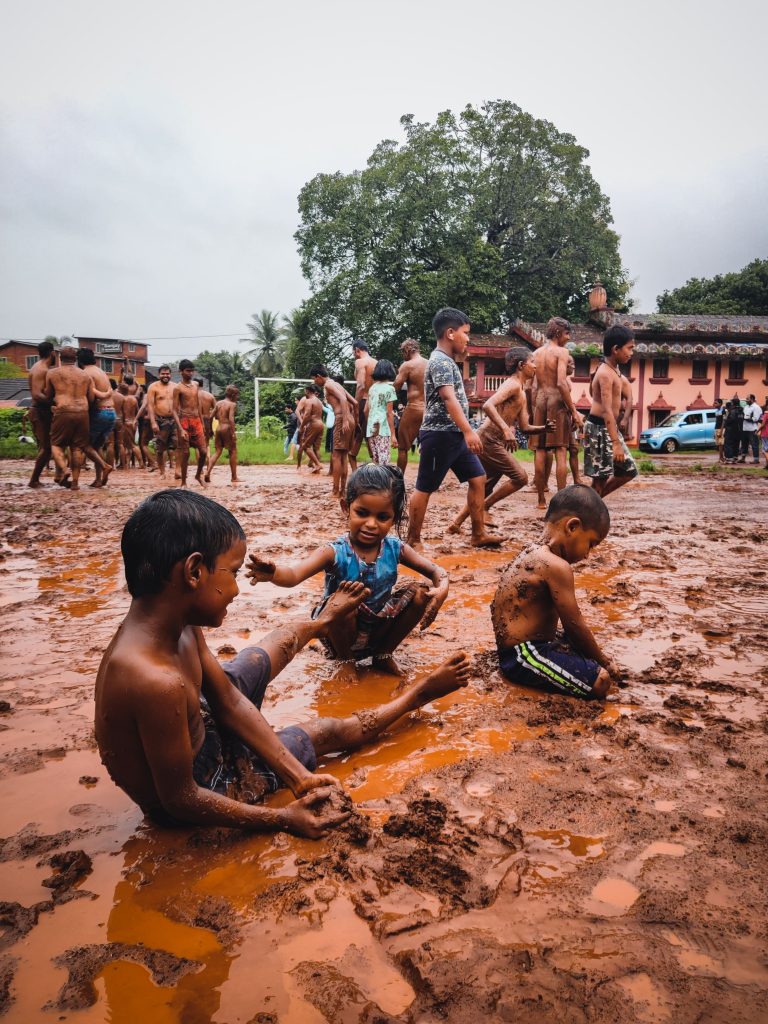
Chikhal Kalo celebrates Krishna’s childhood. Balkrishna loved playing in the mud much to the annoyance of his dear mother Yashodha. The villagers of Mashel in Ponda, keep up with this tradition on the twelfth day of the Hindu month, Ashadh. The villagers gather in front of the only Devaki-Krishna temple in Goa that was moved from Chorao, with lots of music and enthusiasm. Songs are sung and local sweets such as puran polis are thrown to those in the mud! What entices us is that this festival asks you to drop your inhibitions and to be completely childlike, and for a moment to shamelessly like Balkrishna, forget all your worries and fears of being judged! India’s own rendition of La Tomatina is waiting to be experienced.
Potekar (February/ March, Divar)
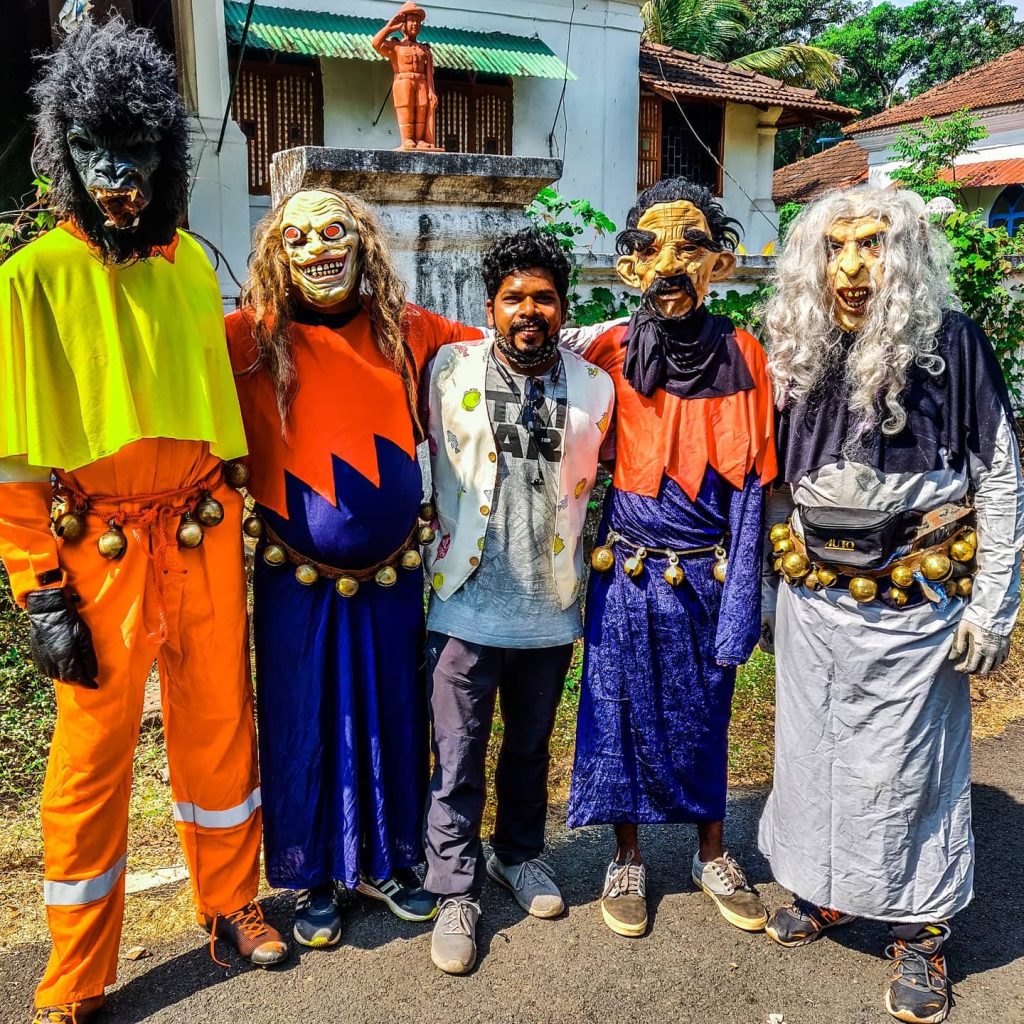
Fat Tuesdays or “Mardi Gras” is a day of enjoyment for Catholics all around the world before they begin their fasting for Lent. Goa has its own fair share of exuberant carnivals that we Goans love to indulge in. Yet, the island of Divar in Goa adds a unique touch to it. Resembling Halloween, Potekar witnesses the villagers of Divar dressing up in homemade costumes and masks. It goes on for three days ending on Fat Tuesday, during which those in costumes try to scare off children and demand sweets from residents.
They also wear bells around their waists which are heard from far away. The affinity and bond amongst the villagers is such that they offer beer and even lunch to these dressed-up people! Once feared, the locals have now warmed up to this festival as a joyful gathering of one big family. According to the elders of the village, this tradition helps instil moral values and good behaviour in children.
Chorotsav (February/March, Valpoi)
Every year in February/March, Goa comes alive in celebration of Shigmo, the spring festival of Goa. Different Goan villages add their own twist to the celebrations, but none beat the eerie version that is celebrated in the village of Zarme in Valpoi, at the foothills of the Vagheri mountains in Sattari taluka. On the full moon night in the Phalgun month, the villagers celebrate Chorotsav, or the “festival of thieves”, as a form of penance for the accidental killing of some young men at the hands of their ancestors. They were mistaken as thieves and beheaded. The ritual witnesses a dance by the villagers in front of the temple, and a depiction of the scene of the beheading in all its blatant honesty, including an actual burial of men such that their heads stick out!
Mussal Khel (February/March, Chandor)
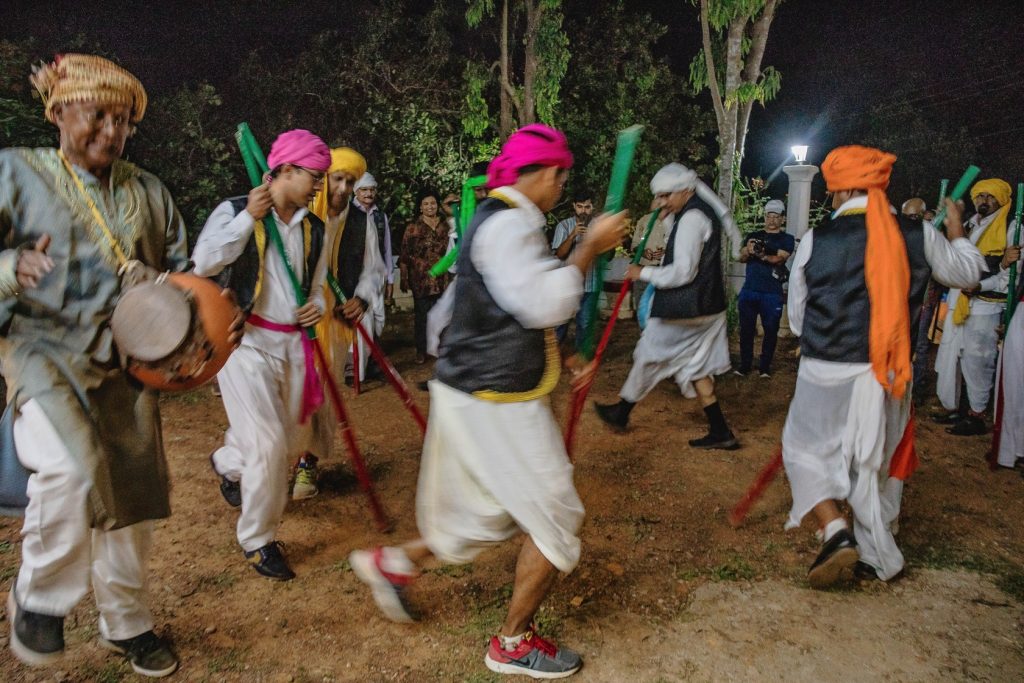
On a no moon night in the village of Chandor, a story is recounted with music and dance accompanied by the loud, rhythmic banging of mussals or pounding sticks, weapons of war of Kshatriyas from a time bygone. The Mussal Khel has been a Hindu tradition, supposedly to drive away evil spirits. It stuck around with the denizens of Chandor despite being converted to Christianity, finding itself a part of a performance that celebrates the sense of pride that comes with being a Kshatriya. It also recounts the victory of the King Harihar of Vijayanagar over the Cholas in the 14th century, which is when the Mussal dance found prominence in Chandor.
This celebration is so engaging and the rhythm of the mussal beats held us spellbound as we let stories take us to a different land.
Gadyachi Jatra (April, Bicholim)
This festival is celebrated to demonstrate one’s gratitude towards ghosts and spirits in the villages of Sal, Borde-Bicholim, Pilgao, Kudne, and Savai-Verem during the spring-harvest celebrations of Shigmo. The one that takes place on the night of holi poornima in the village of Sal attracts a large crowd from the neighbouring states and is an event worth witnessing. Lord Mahadev is known to be the God of Ghosts and this jatra honours him. This mesmerising festival goes on for three days and is nothing short of mysterious.
A pole decorated with mango leaves is erected around which men in white dhotis, called gades, sing and dance. It is believed that on the third day, when they’re all under a trance, a ghost or devchar lures them into the forests with a burning lamp. It tries to fool them by lighting and extinguishing the fire, an event which many come to witness! It also hides a few gades amongst the trees. They are found unconscious and revived with holy water.
What’s more, in a village called Kudnem, the same jatra passes without illuminating any torches or lamps for the said three days!
Sheni Uzzo (February/ March, Quepem)
A tradition of burning sheni, or cow dung cakes that has been passed down for almost 400 years says a lot about the faith of Malcornem’s residents. On a full moon night in the Phalguna month of the Hindu calendar devotees carry tall areca nut trees to a predetermined site. This is used as “holika” around which bare-chested devotees dance in a trance to the beat of dhol. They light the sheni on fire (uzzo), not minding the ambers that fall on their skin, aware of only the energy that is keeping the night alive. This celebration in all its brilliance passes in gratitude for the spirits during the spring/ harvest season.
Vasco Saptah (July/August, Mormugao)
A long long time ago, the humble village of Vasco Da Gama succumbed to a plague. There was no hope in sight and so, the villagers turned to Lord Damodar, their village deity for aid. They prayed around the clock, for seven days without any pause, and voila, their prayers were answered. The tradition continues where prayers go on for 24 hours, and a fair lasts for seven days. The bustling event boasts of sweets and other delicacies, goodies to purchase and a theme park with a Ferris wheel and other enjoyable rides!
Sao Joao (June, Goa)
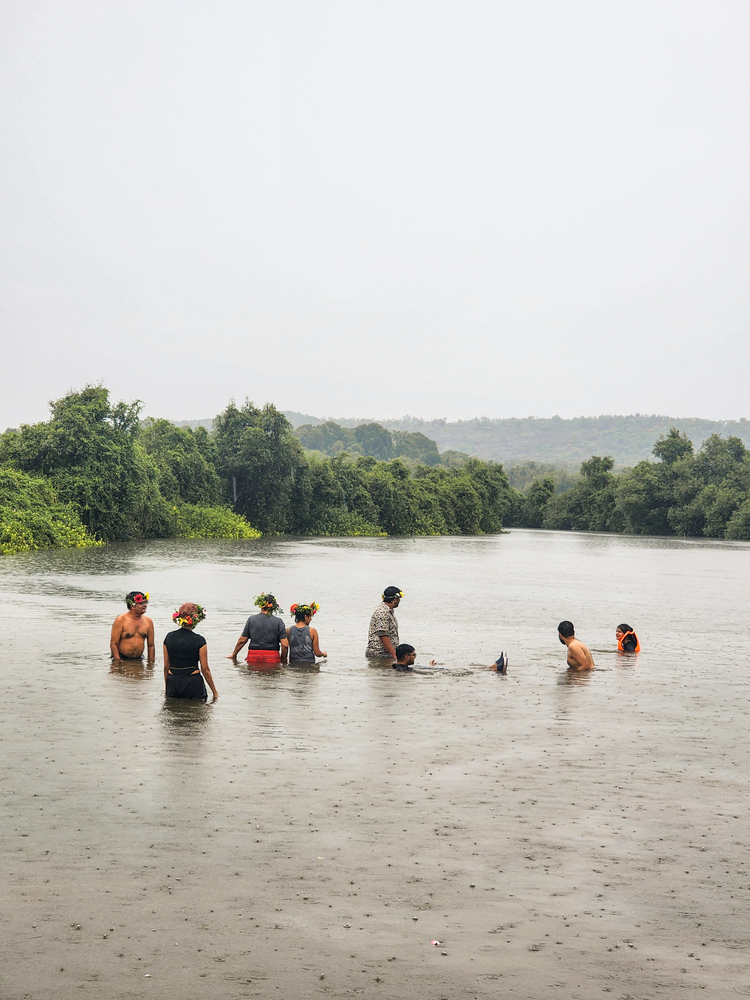
You hear the ghumot, and the kansallem, feel the rain drench your skin and the noise and laughter create a rhythm that makes you lose yourself in exclaiming “viva Sao Joao!”. Sao Joao is one of the most fun and lively of Goa’s festivals. Despite being a catholic festival, all Goans partake in it, engaging in dancing in the maddos near the ponds and lakes or jumping into wells, leaving behind all fears and inhibitions to be one with nature and those around them! It is said to resemble the “leaping of Joy” of the child in Elizabeth’s womb leaping when a pregnant Mary visits her. There are amazing food, Feni and pretty, colourful headgears made from leaves and flowers called kopels. If you head over to Siolim in Bardez Taluka, you’re in for a treat as the village sets the bar with its bright and colourful river floats!
Shisharanni (March, Canacona)
Occurring once every three years in the Temple of Mallikarjun in Canacona, Shisharanni demarcates a part of the Shigmo celebrations that take place all around Goa. The word shisha signifies a type of tree, and ranni refers to a special cooking place. The ritual involves three men in white dhotis known as gades who are believed to be the human representation of Goa for a limited duration. The gades wear turbans of wet cloth and are made to lay down unconscious with their heads joined. What comes next will blow your hair back! Their turbans are used as a stove under which shisha branches are lit on fire, over which a pot of rice is kept for cooking. It is believed that the God in them will protect them! This chilling festival has its own kind of magic that leaves us speechless. If you’re really in for exploring Goa for what it is, you shouldn’t miss it!
Zagor
Zagor in Konkani means “vigil”, referring to a series of celebrations all around Goa that go on the entire night. It involves songs and dance performances that are aimed at waking up the spirits of a village. Instruments such as ghummots find their way here along with delicacies such as Patoleo that are irresistible to an average human.
There are four main variants of Zagor, two of which are renowned for their distinctive features.
The first one is celebrated in Veling and several other villages in Ponda and even Tiswadi taluka, by the Hindu Gauda community. The one unique feature about the performances that take place here is the depiction of 67 human tendencies by 67 different characters! Celebrated post-harvest in May, this event ought to be quite a therapy session!
Our research then took us to Siolim in Bardez taluka, where in December the Hindu and the Catholic communities celebrate Zagor together! It is crowded, mandatory and one of the most wholesome events in Goa! The festival involves a procession known as suari to a holy site called the maand where the villagers perform unique characters, indulge in Luso- Goan meals, phenomenons that are distinct from any other Zagor celebration!
Lairai Zatra (May, Bicholim)
We kept the wildest for last, an event so mystical and spine-chilling, it’ll take you eons to forget! We’re talking fire-walking, on a pile of cinders in the late hours of night. The celebration occurs for the Goddess Shri Lairai, one of the deities of Shirgao village in Bicholim. The Dhonds, i.e. the devotees of the temple, dress in white dhotis and a glowing sense of pride and honour. They also carry colourful woven sticks with ornaments of wool called Ven’th. The day is charged with enthusiasm of the Dhonds, the desire to mark their faith in honour of their village deity and the excitement ebbs through the air, making the hair on your skin stand.
Thousands of Dhonds dance around a lot pyre, awaiting the moment that would ask them to prove their faith. As the pyre settles, the Dhonds run over the hot cinders, of which, the heat can be felt metres away. If you watch with rapt attention, you’d notice that a few actually take their own sweet time to walk over the volcanic mess. The event concludes with dawn as the devotees, content, return to their homes.
The Three Kings Feast (January, Cansaulim)
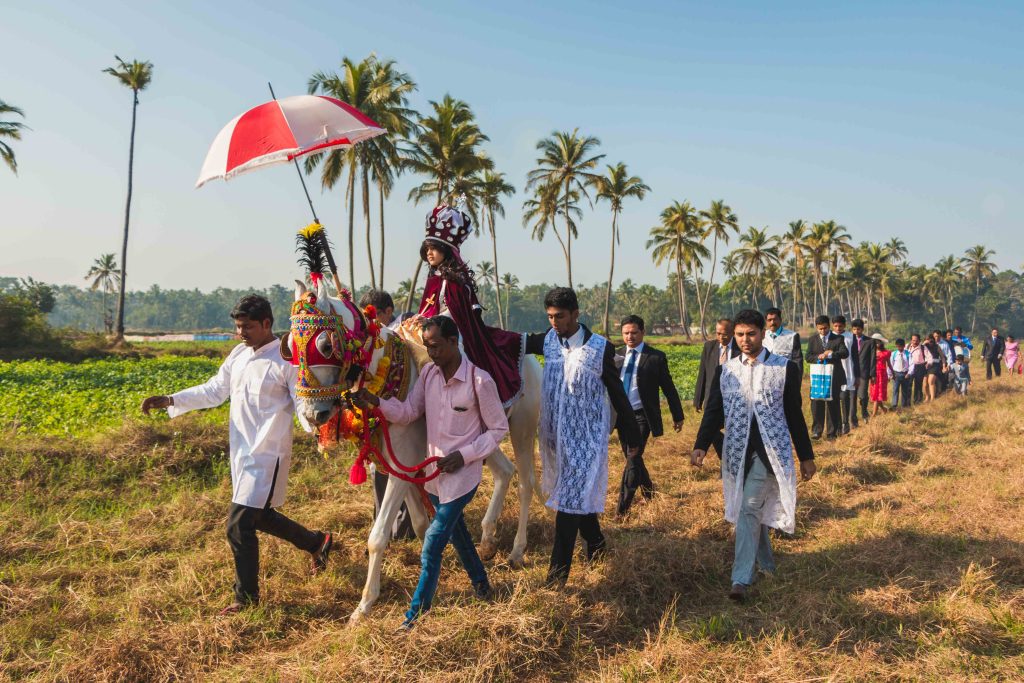
The day of Epiphany, or the Three Kings feast is celebrated in Goa to remember the day when the Three Wise Men followed the North Star to find baby Jesus more than 2000 years ago.
In the village of Cansaulim, this festival of Goa is celebrated with much pomp and joy. Three kids, one each from the villages of Arrosim, Cuelim and Cansaulim, are dressed up as kings. They ride on horseback to the Chapel of Our Lady of Remedies, more popularly known as the Three Kings chapel. It sits atop a hill overlooking a sprawling Goan landscape. The Kings are made to carry with them the original gifts of gold, frankincense and myrrh. They attend the mass at 10:00 am and descend to a lush lunch spread. The best part about this is that each year the onus of preparing this fare falls on any one family of these villages who do it with great delight and love!
The feast is also accompanied by a grand setup of a market full of sweets, clothes and other attractive goodies! In all its gaiety and chaos, the Three Kings Feast leaves our hearts dripping with contentment of a different kind.
Dance of the Makhars (October)
The ‘Navratri Makhars’ are huge decorative wooden frames which make their appearances during Navratri in various temples of Goa. Goans love decking up their goddesses during this amazing festival that celebrates the divine feminine spirit! During the festivities, the idols sit inside these frames and every night (Navratri nights) they are moved to the rhythm of music, which is also known as the dance of the Makhars. Most temples across Goa celebrate this festival but the one that happens in Veling is our favourite!
Makhars are difficult to design and the wooden skeletons that were made ages ago are decorated with fresh paper craft every year! The Makhars stand as symbols of Navratri, carrying deities that are dressed up differently every day!
It is a joyous occasion worth witnessing for the happiness it creates within us!
Why you need to be part of a local Goan festivals
Travelling helps pave a way to discovering new cultures, finding similarities in the differences and uniting with the world through our shared yet unique experiences! Movies take us through the most unknown corners, celebrating cultures of destinations around the world and somewhere along the way, we forget the rich heritage and diversity in our own backyard. So here we are, paving a way for you, into a culture that is unique in its own way and awaits to be experienced!
So are you up for undertaking this adventure?
